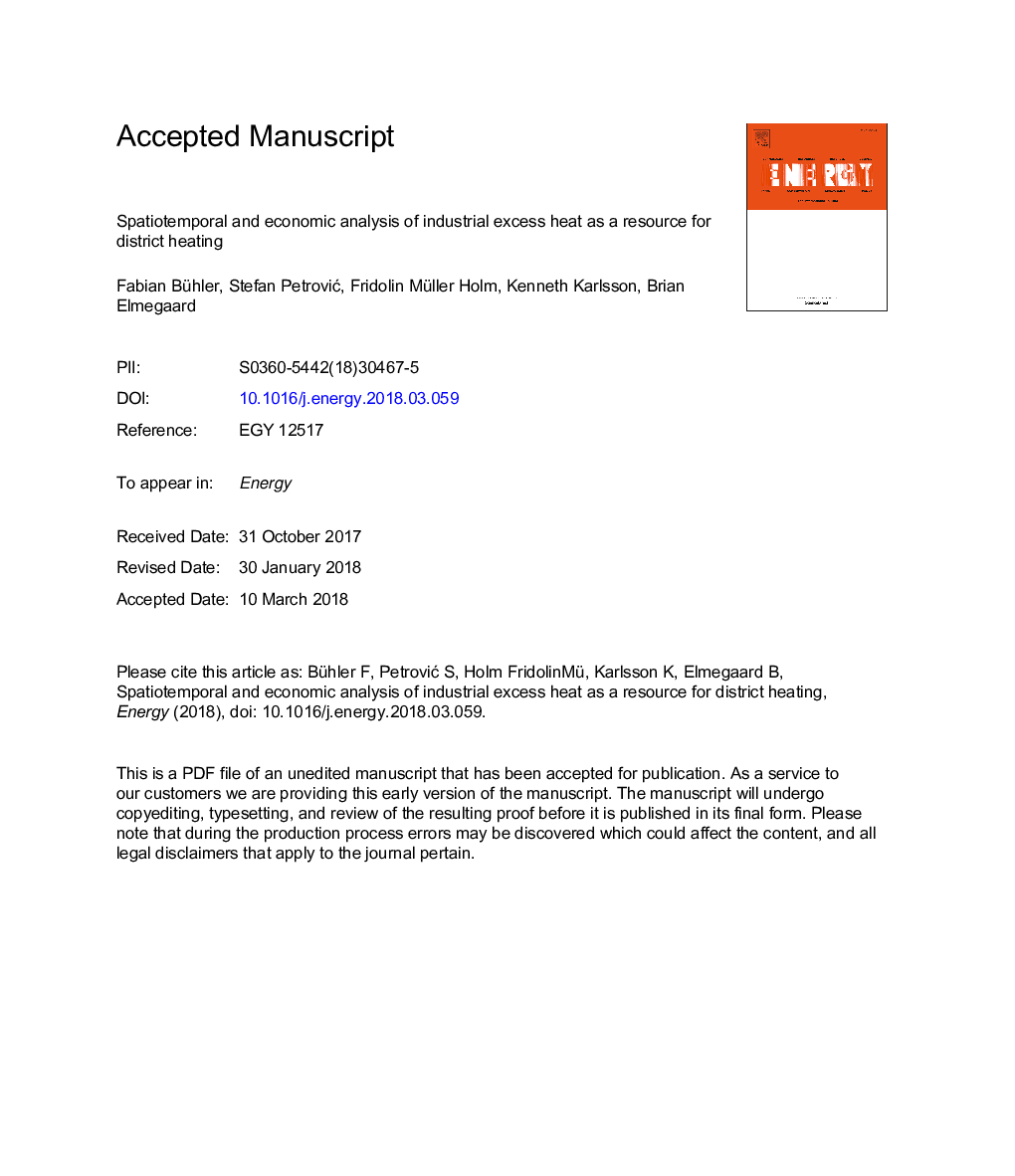| Article ID | Journal | Published Year | Pages | File Type |
|---|---|---|---|---|
| 8071807 | Energy | 2018 | 51 Pages |
Abstract
Industrial excess heat may often be utilised for district heating and thus replace existing expensive or CO2-emitting technologies. Previous works analysed the distribution of excess heat by temperature intervals and their geographical distribution relative to district heating areas. A more detailed analysis of the most suitable types of industries and the costs is required, allowing a targeted exploitation of this resource. This work extends the spatial and thermodynamic analysis, to account for the temporal match between industrial excess heat and district heating demands, as well as the costs for implementation and operation of the systems. This allows the determination of cost-effective district heating potentials, as well as the analysis of different industries and technological requirements. The results show that the temporal mismatch between excess heat and district heating demand and lack of demand, reduces the theoretical substitution potential by almost 30%. If heat storages are introduced, the total potential is reduced by only 10%. A majority of the excess heat can be utilised at socio-economic heating costs lower than the average Danish district heating price and the cost of solar district heating. Excess heat from oil refineries, building material and food production can be utilised at the lowest specific costs.
Related Topics
Physical Sciences and Engineering
Energy
Energy (General)
Authors
Fabian Bühler, Stefan PetroviÄ, Fridolin Müller Holm, Kenneth Karlsson, Brian Elmegaard,
